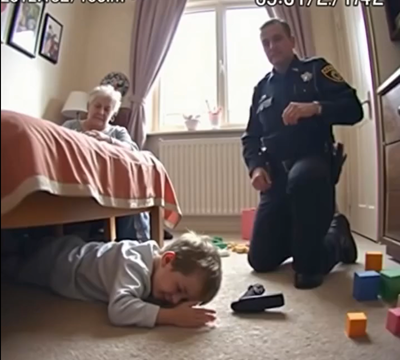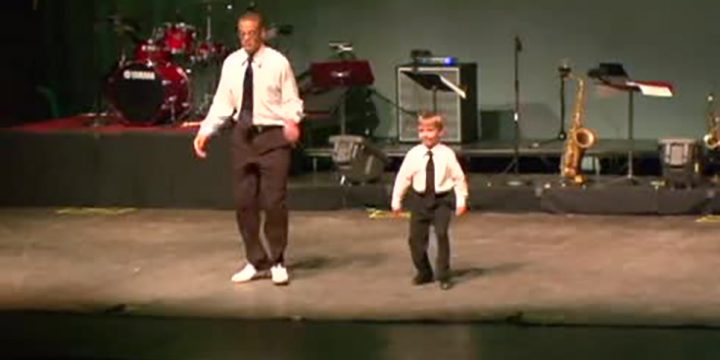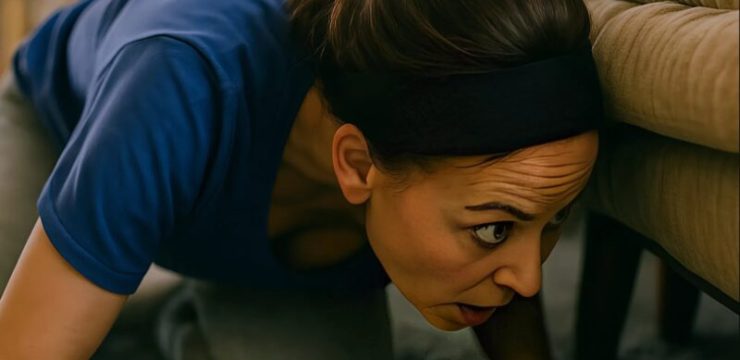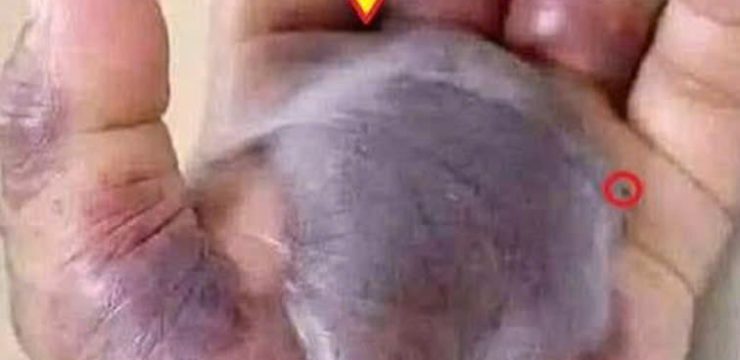It was just another hectic morning as I sped down County Road 12, trying to make it to a big meeting on time, when something unusual caught my eye along the roadside. There, near a muddy ditch, huddled four tiny boxer puppies, trembling, soaked, and covered in grime.
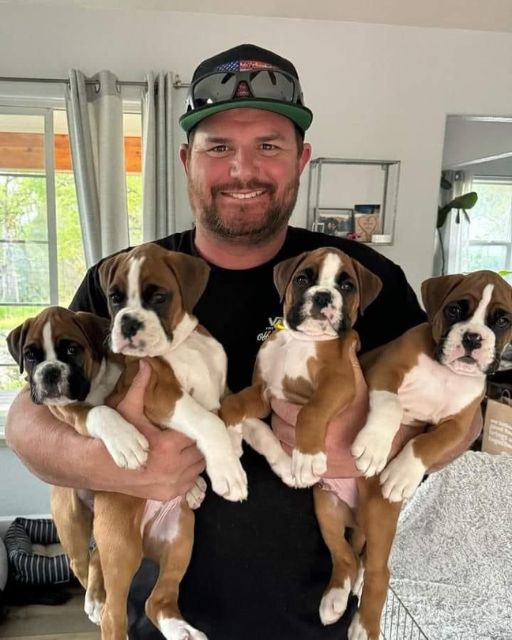
At first, I was torn—I was already late and in no mood for unexpected stops. But the sight of those helpless little bodies shivering beside a battered, half-collapsed cardboard box made the decision for me. There wasn’t a house in sight, no mother dog nearby, just those four scared puppies with nowhere to go. Without thinking twice, I pulled over, grabbed an old hoodie from the backseat, and gently wrapped them up.
They didn’t even resist, just curled into the warmth and whimpered softly. I brought them home, gave them a quick bath, and wrapped them in towels. Once they were dry, my plan was simple: scan them for microchips, post in the local lost pets group, and hope someone was looking for them. That’s when I noticed something strange—a faded yellow collar on one of the pups. Tucked beneath the clasp was a small, handwritten tag. It read, in shaky letters, “Not Yours.” I froze. Something about that message felt cold and threatening. A chill ran down my spine. Later that day, my friend Tate, who works as a vet tech, came by to help.
When he saw the tag, his face went pale. He looked at me and said, “I’ve seen this before, but I really wish I hadn’t.” He wouldn’t go into details right away, just gave me a serious look and said, “These puppies might not be as lost as you think.” We scanned each puppy for microchips. Only the one with the yellow collar had one, and even that led nowhere useful—it was registered years ago to a veterinary clinic several counties over, with no current owner information. None of it made sense. These puppies were no older than eight weeks, far too young to be out on their own. Tate finally opened up a bit more, his voice low.
He told me there are people out there who breed dogs for purposes you don’t even want to imagine—dark things, like illegal dogfighting. “That collar might not be a label,” he said. “It might be a warning to stay away.” Suddenly, I was terrified for the safety of these pups and even more afraid of what kind of people might be looking for them. For four days, I kept the puppies hidden at my house. I didn’t post anything online, didn’t talk to anyone except Tate and my neighbor Jessa. I was afraid that whoever dumped them might come back—and I wasn’t wrong. Late one night, well past midnight, I heard the crunch of tires on my gravel driveway. I peeked through the curtain and saw a beat-up truck pulling in. Two men got out. One had a leash, the other a flashlight. I didn’t wait to see what they’d do. I scooped up the puppies and locked us in the bathroom, heart pounding. From inside, I texted Jessa: “Call the sheriff—something’s not right.” I sat there in the dark, holding the puppies close, listening to their soft breathing and the muffled voices outside. Then I heard one of the men say, “They’re not here… probably taken to the pound.” The other responded, his voice low and threatening, “We will find them—if they’re still alive.” That last part hit me like a brick. I sat frozen, waiting, clutching the pups tighter than ever. Eventually, the truck pulled away, tires spinning down the driveway. I waited another full hour before I unlocked the bathroom door. Later, Jessa confirmed the sheriff was on his way. I don’t know who those men were or what exactly they wanted with those puppies, but I knew one thing for sure—I wasn’t giving them back.
